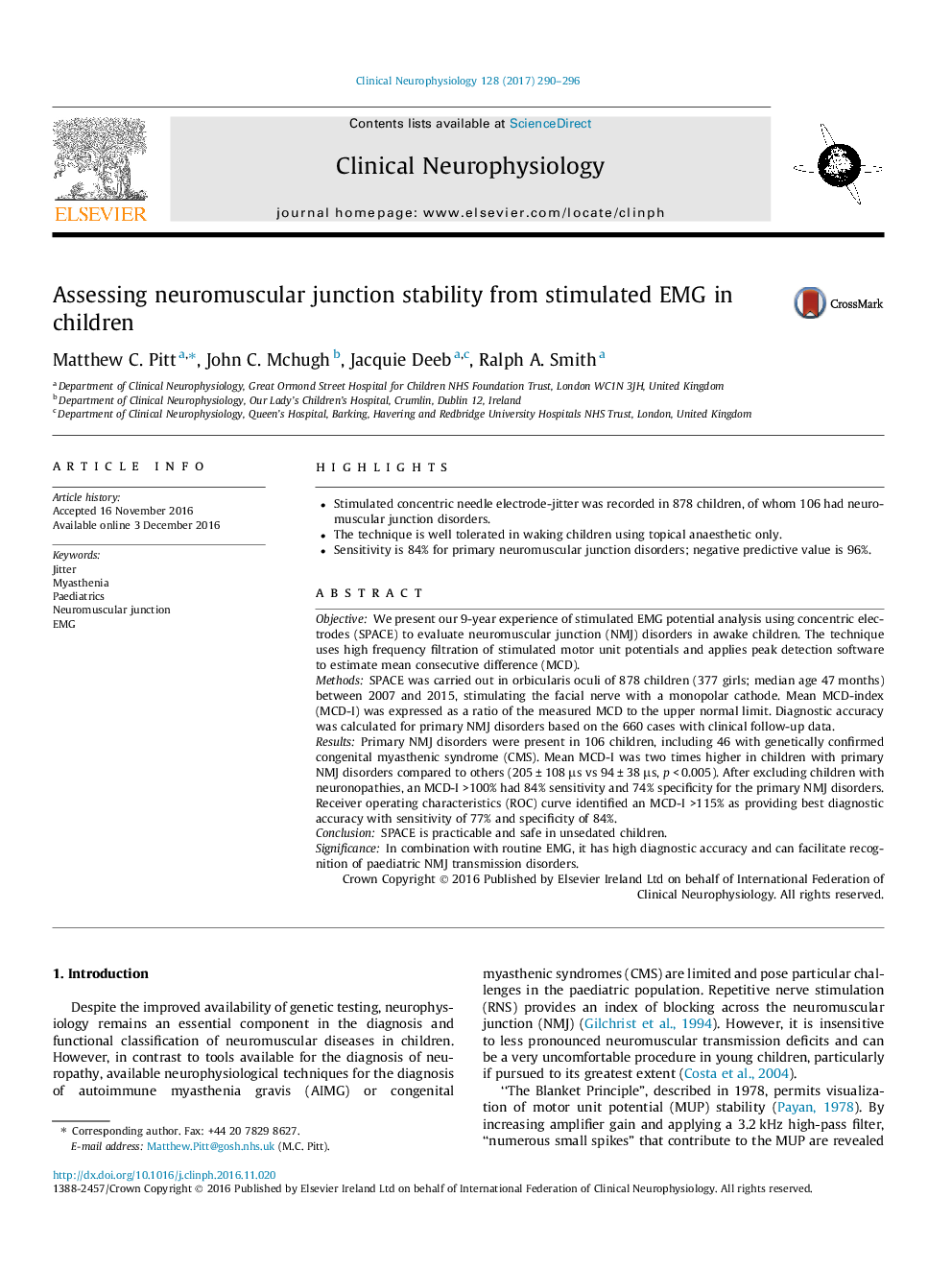| Article ID | Journal | Published Year | Pages | File Type |
|---|---|---|---|---|
| 5627802 | Clinical Neurophysiology | 2017 | 7 Pages |
â¢Stimulated concentric needle electrode-jitter was recorded in 878 children, of whom 106 had neuromuscular junction disorders.â¢The technique is well tolerated in waking children using topical anaesthetic only.â¢Sensitivity is 84% for primary neuromuscular junction disorders; negative predictive value is 96%.
ObjectiveWe present our 9-year experience of stimulated EMG potential analysis using concentric electrodes (SPACE) to evaluate neuromuscular junction (NMJ) disorders in awake children. The technique uses high frequency filtration of stimulated motor unit potentials and applies peak detection software to estimate mean consecutive difference (MCD).MethodsSPACE was carried out in orbicularis oculi of 878 children (377 girls; median age 47 months) between 2007 and 2015, stimulating the facial nerve with a monopolar cathode. Mean MCD-index (MCD-I) was expressed as a ratio of the measured MCD to the upper normal limit. Diagnostic accuracy was calculated for primary NMJ disorders based on the 660 cases with clinical follow-up data.ResultsPrimary NMJ disorders were present in 106 children, including 46 with genetically confirmed congenital myasthenic syndrome (CMS). Mean MCD-I was two times higher in children with primary NMJ disorders compared to others (205 ± 108 μs vs 94 ± 38 μs, p < 0.005). After excluding children with neuronopathies, an MCD-I >100% had 84% sensitivity and 74% specificity for the primary NMJ disorders. Receiver operating characteristics (ROC) curve identified an MCD-I >115% as providing best diagnostic accuracy with sensitivity of 77% and specificity of 84%.ConclusionSPACE is practicable and safe in unsedated children.SignificanceIn combination with routine EMG, it has high diagnostic accuracy and can facilitate recognition of paediatric NMJ transmission disorders.
